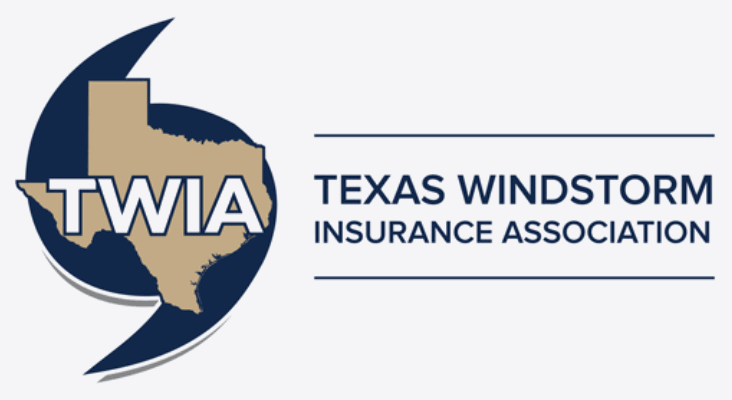TWIA could buy 46% more reinsurance limit for 2023 (if cost allows)

Because of increased exposure and an adjustment to its catastrophe risk modelling approach, the Texas Windstorm Insurance Association (TWIA) could end up buying around 46% more in reinsurance limit for the 2023 hurricane season.
Hearing from risk modelling experts at insurance and reinsurance broker Aon yesterday, the TWIA Actuarial & Underwriting Committee explored a variety of risk model outputs designed to help them come up with a recommended target for reinsurance limit to buy for 2023, to take to the TWIA Board for approval next week.
The Committee heard about catastrophe modelling results that look at its exposure and 100 year probable maximum loss from four vendors, Verisk (AIR), RMS, Aon’s own Impact Forecasting and CoreLogic’s RQE.
After a lengthy technical presentation from risk modelling experts at Aon, TWIA’s Actuarial & Underwriting Committee agreed on a recommendation to take to the Board, which will drive its minimum statutory funding (and risk transfer needs) for the year ahead.
Before getting to the recommendation, the upshot is that TWIA could go to market to buy $928 million more in reinsurance limit for 2023 (than in 2022), should the Board adopt the recommendation and, very importantly, should TWIA be able to afford the much higher rates-on-line and pricing in the current hard market.
The Committee recommended that for this year, only the AIR and RMS risk models be taken into account for setting the PML, with a 50% – 50% weighting for each.
In addition, the Committee has shifted its recommendation to using the long-term assumption of risk, rather than the near-term (warm SST) that it has used historically.
Both of these are interesting shifts, as they have effectively raised the 1-in-100 year PML, suggesting TWIA needs to buy more protection.
But perhaps most interesting is the shift to the long-term view of risk, as many reinsurers and catastrophe bond investors look to the near-term which could result in a disparity, between TWIA’s new view and the view of some of its reinsurance and cat bond markets.
As a result of the above, the 1-in-100 year PML that will be proposed to the TWIA Board next week and which helps set its minimum statutory funding requirements is just over $5.244 billion.
Based on a suggested retention of $2.28 billion, slightly higher than the 2022 retention, this PML would mean the reinsurance limit that TWIA is required to buy in 2023, if this recommendation is approved by the Board and it tries to get to fully-funded, would be just over $2.964 billion.
That’s 46%, or $928 million up on the 2022 purchase of reinsurance, which was just over $2 billion.
We had explained in an article back in November 2022 that TWIA’s reinsurance needs could increase to close to $3 billion in 2023, on the back of rising exposure and policies-in-force, that meant more coverage would be required. This recommendation could get the property insurer of last resort close to that amount.
The reason for this being, that TWIA’s 1-in-100 year PML has been growing due to increased in-force policy exposure, as well as inflationary pressures.
For the 2022 year, TWIA secured just over $2 billion of reinsurance in total, $1.1 billion of which was from the catastrophe bond market.
TWIA buys its traditional reinsurance on an annual basis, but the Alamo Re catastrophe bonds provide layered, multi-year cover.
There are still $1.1 billion of Alamo Re catastrophe bonds in-force, but a $400 million chunk of that is slated to mature before the 2023 hurricane season.
As we reported in December 2022, TWIA’s Board agreed that its staff could bring forwards a renewal of that cat bond, hence a new Alamo Re is expected to hit the market in the first-quarter of 2023, giving the residual market insurer the option to bring another before the season begins as well.
But the 1-in-100 year PML drives the overall need for reinsurance limit for 2023 for TWIA and so this recommendation is critical in defining how much cover the insurer will buy, while that will then include the remaining $700 million of catastrophe bonds, plus any new cat bonds sponsored in 2023 before the wind season as well.
As a result, if the Board agrees to the $5.24 billion 1-in-100 year PML and to the $2.964 billion of reinsurance limit as the targeted purchase, between new cat bonds and traditional reinsurance, TWIA will need to purchase around $2.264 billion of additional limit before the 2023 hurricane season begins.
Which is a lot, especially at the far higher reinsurance pricing we see today.
So it would not surprise to see the TWIA Board adjust the attachment, or simply decide for its staff to go and buy as much reinsurance as TWIA can afford for a certain budget, something we’ve seen in the past.
TWIA has, in recent years, had more catastrophe bond cover than traditional reinsurance, but with a much larger limit of reinsurance required, it is going to be interesting to see how the traditional and alternative reinsurance instruments split out for 2023.
Either way, the fact the PML is up by so much based on the modelling decisions taken, and so the need for reinsurance so much higher while the market is now so much harder in terms of pricing, TWIA will either be spending a lot more on reinsurance, or it will be buying a lot less, in 2023.
You can read about all of TWIA’s Alamo Re catastrophe bonds it has ever sponsored in the Artemis Deal Directory.








